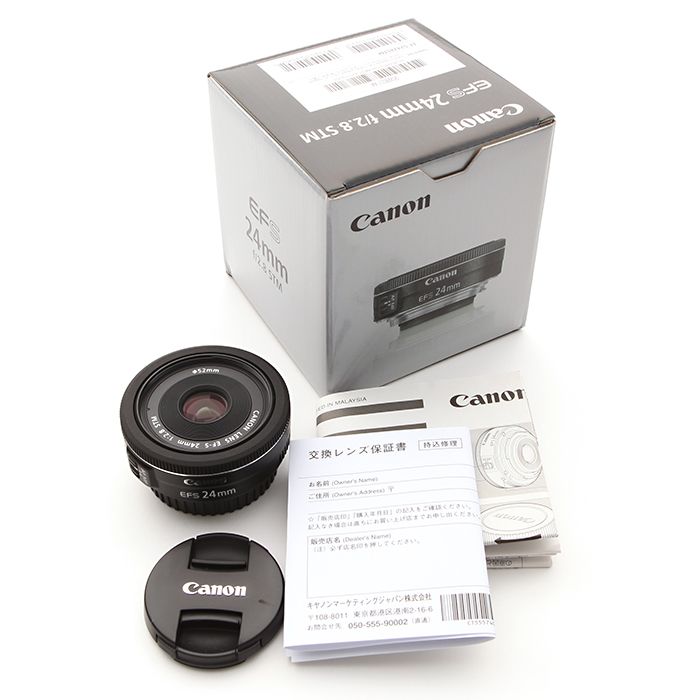Product Description
Introducing the Canon 24mm EF-S f2.8 STM Pancake Lens
A highly portable pancake lens that's ideal for travel and street photography. Its advanced optical design ensures great image quality, while a large f/2.8 maximum aperture allows hand-held low-light shooting. STM focusing delivers smooth, near-silent AF when capturing movies.
Key Features
- Super-slim, pancake design
- Natural, human-eye perspective
- Smooth, quiet focusing when shooting movies
- Use large apertures to shoot in low light
- Close focus to 0.16m
Portable pancake design
At just 22.8mm deep, and weighing just 125g, the EF-S 24mm f/2.8 STM is a highly portable lens that lets you take your EOS anywhere. Its diminutive design makes it discreet too – ideal for street photography.
Natural perspective
The 24mm focal length when used on an APS-C EOS body gives the same angle of view as a 38mm lens on a full-frame DSLR. That's close to that of the human eye, so your pictures will have a natural look and feel about them.
Smooth, quiet focusing
Near-silent STM focusing locks on quickly when shooting still photos, and provides smooth focus transitions when capturing movies, for footage that's free from distracting focusing noise.
Wide aperture for low-light shooting
A fast maximum aperture of f/2.8 lets in lots of light, letting you shoot in dark conditions without using a flash. It is ideal for creating shallow depth-of-field effects too, letting you isolate your subject against a soft, out-of-focus background.
Advanced Optical Design
Enjoy Razor-Sharp Performance Right Across the Frame, with High Resistance to Flare and Coloured Fringing. Get as Near as 16cm to Small Subjects for A Close-Up View of The World.
Physical Specifications
- Product Weight: 125g
- Maximum Diameter X Length (mm): 68.2 X 22.8
- Filter Diameter (mm): 52
Optical Characteristics
- Af Actuator: Stm
- Angle of View: 59º 10', 50º 35', 34º 55'
- Minimum Aperture: 22
- Lens Construction (elements/groups): 6/5
- Distance Information: Yes
- Magnification: 0.27
For full specifications click Here
















